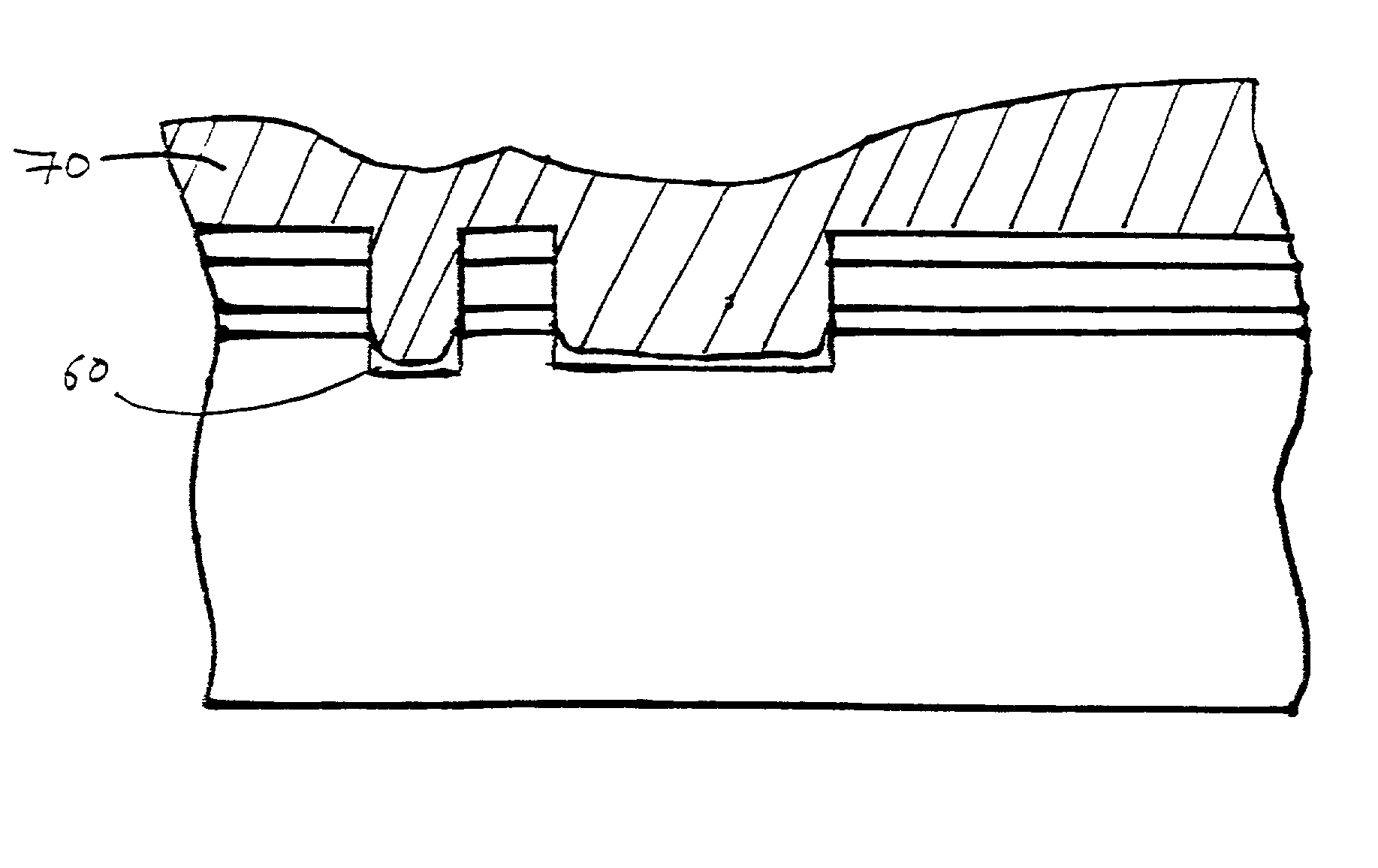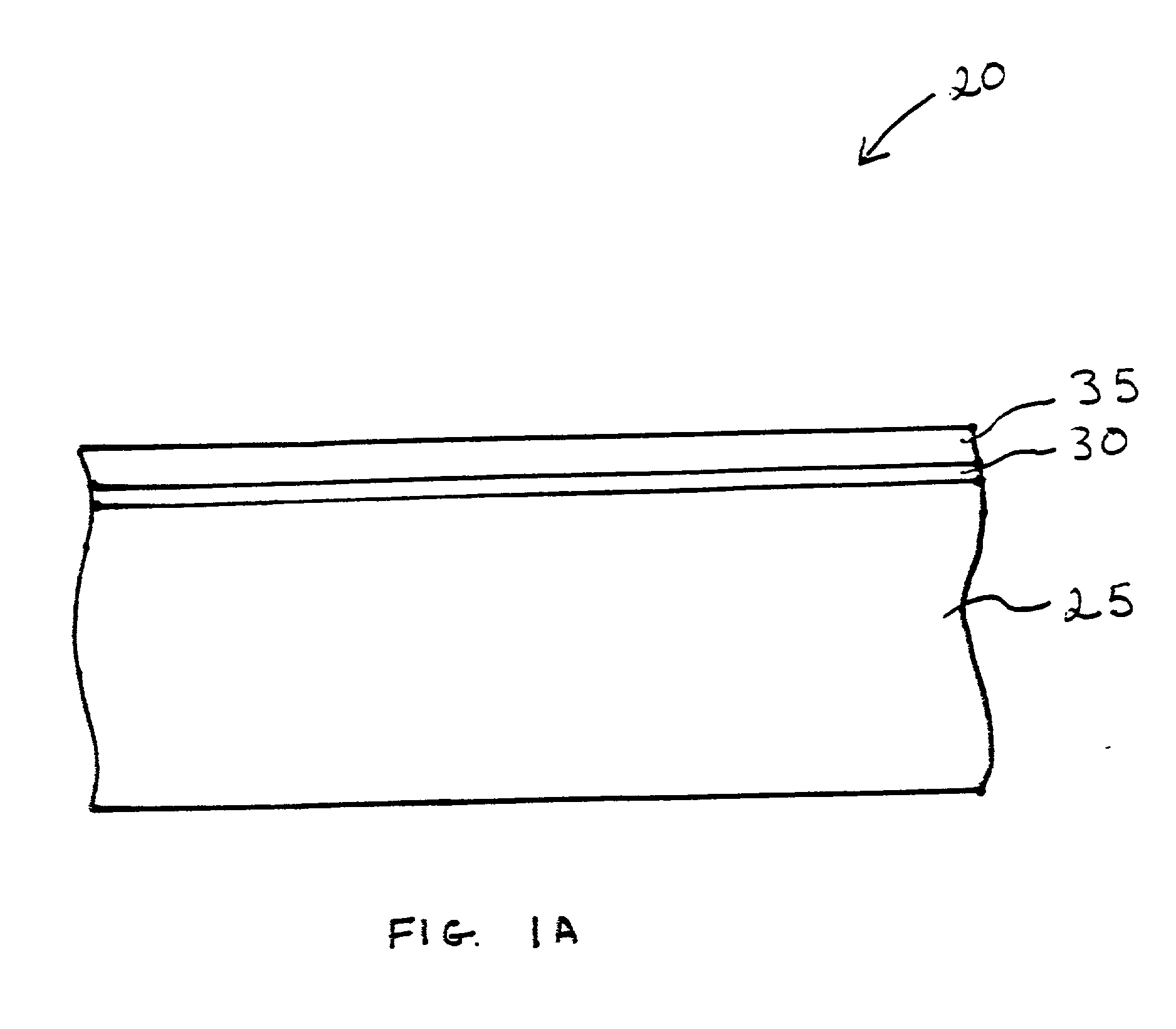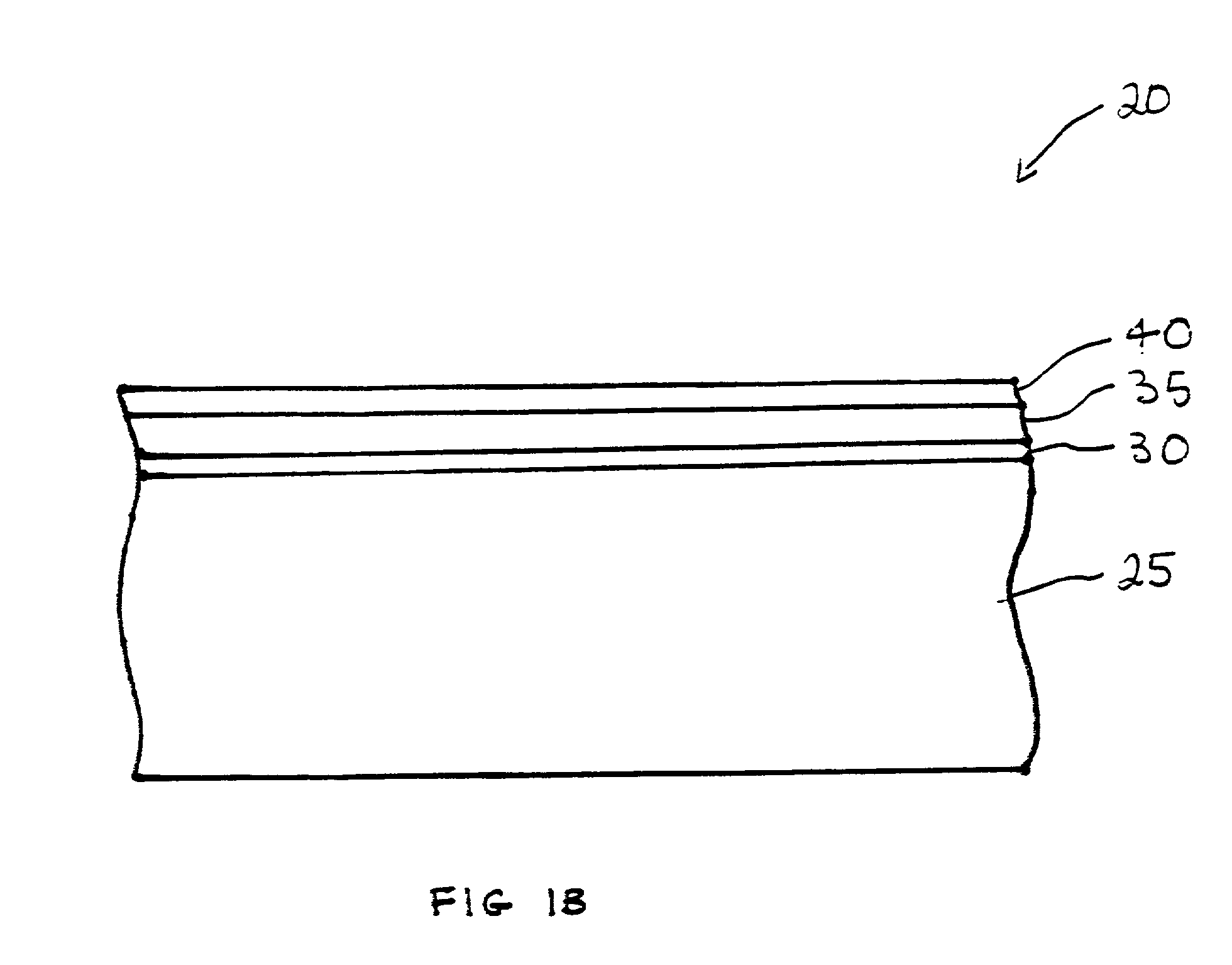Simplified method of patterning field dielectric regions in a semiconductor device
a semiconductor device and simplified technology, applied in semiconductor/solid-state device manufacturing, basic electric elements, electric devices, etc., can solve the problems of increasing power consumption, increasing noise between devices, and increasing difficulty in maintaining performance and reliability, and achieve cost-effective
- Summary
- Abstract
- Description
- Claims
- Application Information
AI Technical Summary
Benefits of technology
Problems solved by technology
Method used
Image
Examples
Embodiment Construction
[0026] The present invention addresses and solves problems stemming from conventional methodologies of forming field dielectric regions, e.g., shallow trench isolations. Such problems include costly and time-consuming steps limited by materials which require different deposition systems and apparatus.
[0027] The present invention constitutes an improvement over conventional practices in forming field dielectric regions wherein a photoresist is deposited on a highly reflective surface, such as silicon nitride. The present invention enables the formation of dielectric regions with accurately controlled critical dimensions. In accordance with embodiments of the present invention, the semiconductor device can be formed by: forming an oxide layer on a semiconductor substrate; forming a silicon nitride layer on the oxide layer in a chamber; forming a silicon oxime coating on the silicon nitride layer in the chamber; and forming a photoresist mask on the silicon oxime coating. Embodiments o...
PUM
| Property | Measurement | Unit |
|---|---|---|
| thickness | aaaaa | aaaaa |
| thickness | aaaaa | aaaaa |
| thickness | aaaaa | aaaaa |
Abstract
Description
Claims
Application Information
 Login to View More
Login to View More - R&D
- Intellectual Property
- Life Sciences
- Materials
- Tech Scout
- Unparalleled Data Quality
- Higher Quality Content
- 60% Fewer Hallucinations
Browse by: Latest US Patents, China's latest patents, Technical Efficacy Thesaurus, Application Domain, Technology Topic, Popular Technical Reports.
© 2025 PatSnap. All rights reserved.Legal|Privacy policy|Modern Slavery Act Transparency Statement|Sitemap|About US| Contact US: help@patsnap.com



